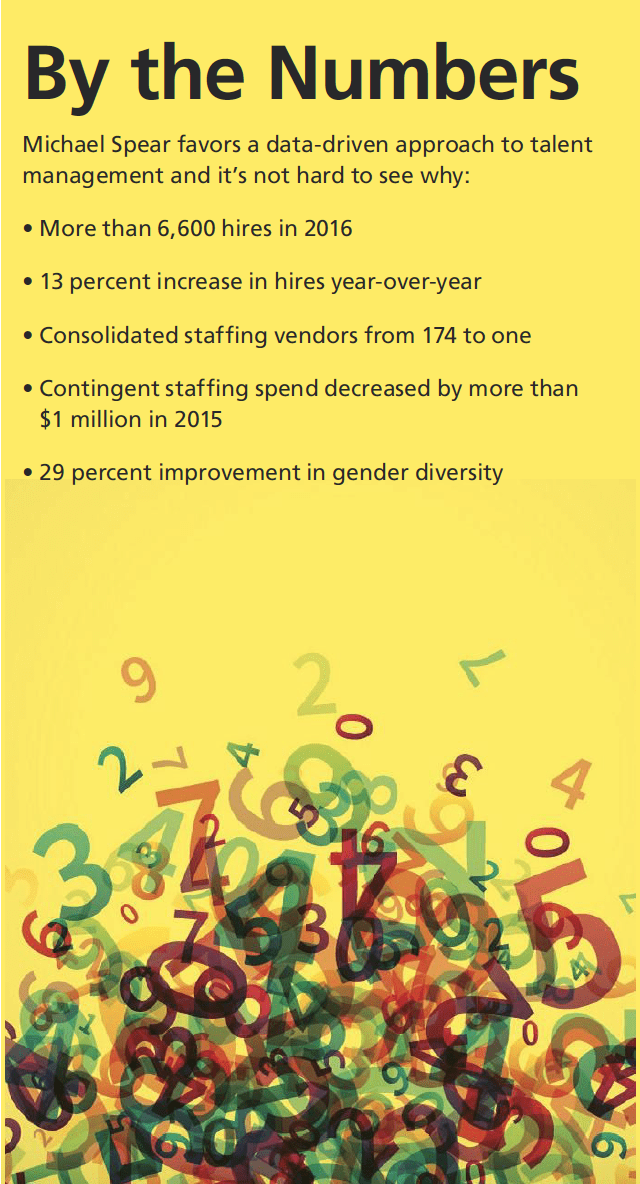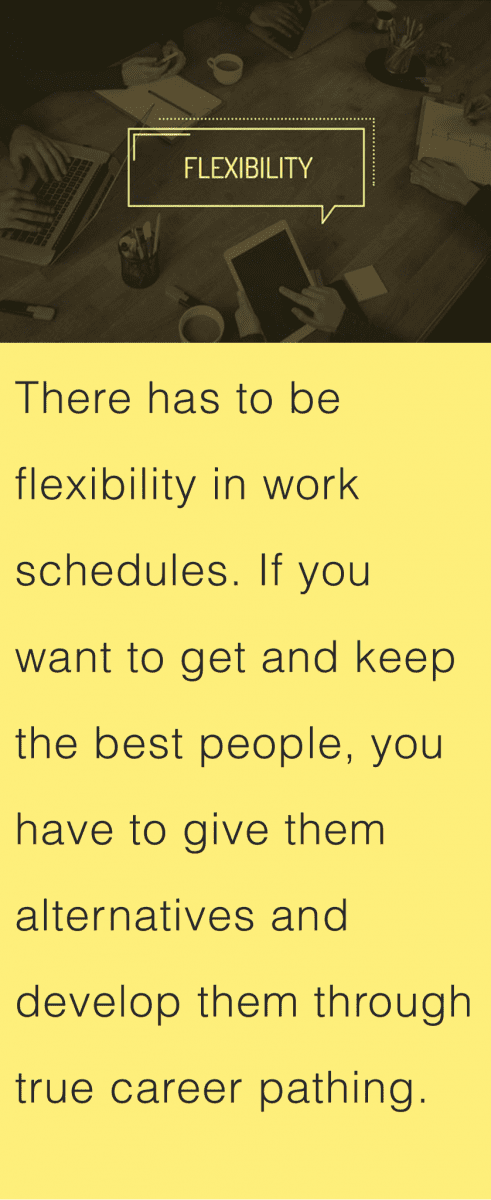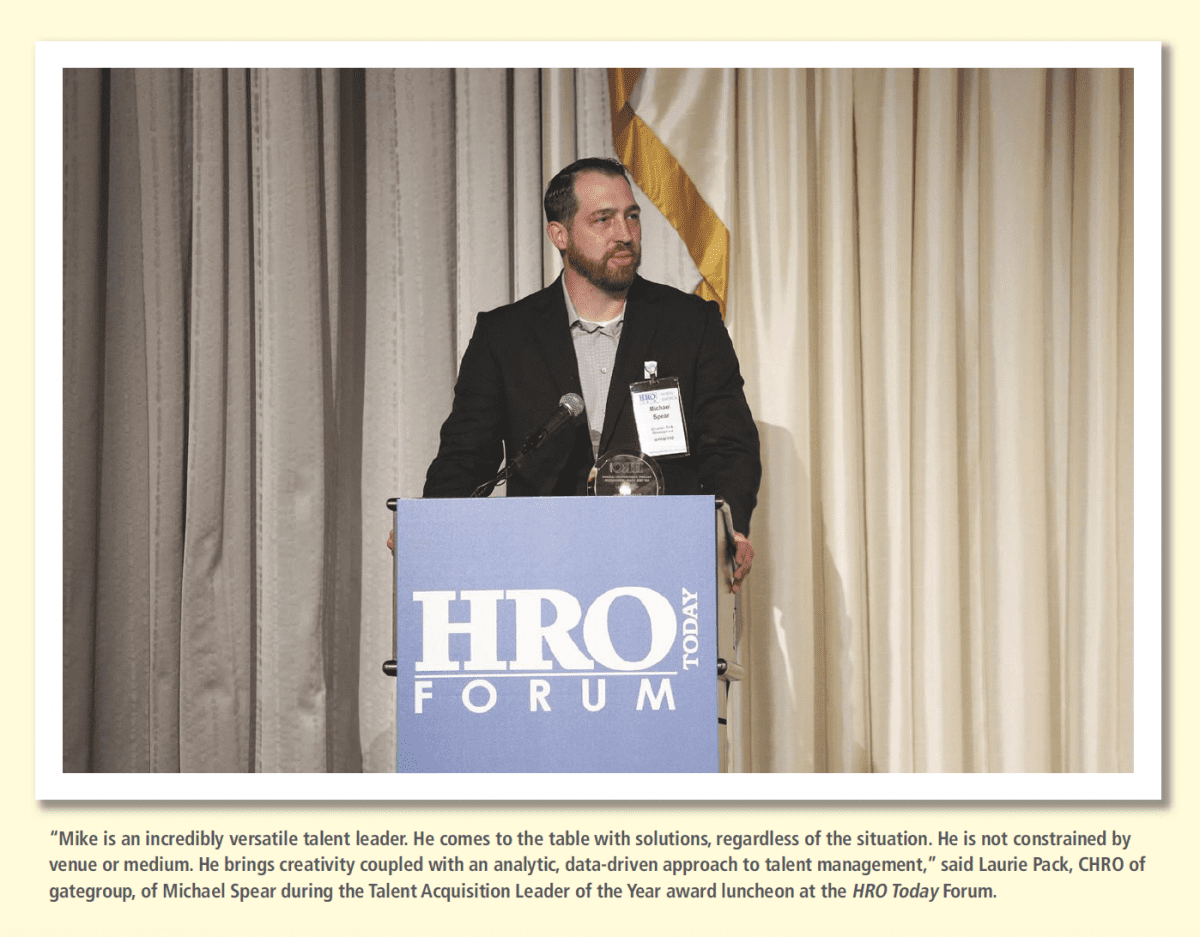gategroup’s Director of Talent Michael Spear drives game-changing results with his workforce planning tool.
By Debbie Bolla
When Michael Spear, director of talent acquisition and development for gategroup, accepted his award for Talent Acquisition Leader of the Year for Innovation at the 2017 HRO Today Forum in Chicago, he said:
“The most important thing, when you are looking at innovation as leaders, is to empower your people to come to you with ideas. When you do that, you get results like we have.”
This collaborative, teamwork-based approach has helped drive much of the success that Spear has brought to his organization. He is responsible for the inherently challenging task of appropriately staffing a business that experiences seasonal staffing fluctuations and extremely aggressive hiring targets. And he may have cracked the code: In 2016, Spear and his team oversaw more than 6,600 hires -a 13 percent year-over-year increase. Here, he discusses the workforce planning tool that is improving hiring processes and efficiency; why organizations must offer workforce alternatives; and how TA can get the most from HR service partnerships.

Michael Spear: Historically we’ve combated issues with true workforce planning. In the past, hiring was very reactionary. We were able to put together something that gave us true insight, and use it as a baseline for the hiring targets we wanted and could meet. This allowed us to drive results within our operation by ensuring we had a known count of what was needed. Our business is transitional and seasonal so we experience spikes, especially with our union hourly workforce. For years, we had to combat not being prepared for those peaks and valleys -or knowing that they were coming and not reacting quickly enough to the labor demands of business. We developed a tool that helped us understand the hiring numbers we needed in order or meet our metrics. We now recruit and staff to those metrics and are able to get out in front of any deviations and address them with contingent labor ensuring we have the necessary headcount to meet the demands of the business.
HROT: How did you build this tool and how does it work?
Spear: It was a combination of our long-term forecasting tool, short-term forecasting tool, and our union labor reporting. This allowed us to create transparency within the numbers and snapshots so everyone is aligned. The tool looks at key operational metrics, ‘manned minutes’ (the time given by airlines to complete flights), and efficiency targets, and balances them against the current headcount to determine gaps.
This was a very collaborative effort. Our operational planning and control team has their eyes on what we are getting from our customers; our industrial engineer team is in the field measuring our efficiency; and HR is balancing the numbers against our budget. We also know our lead-in time for hiring and developing employees from our HR team. It took a lot of people to understand all of the inputs needed for the key stakeholders to develop a tool that made sense, was effective, and could be communicated to the business.
HROT: How did you earn buy-in and navigate change management?
Spear: It’s been a transition to get there and required a shift in culture. It required communicating what the tool was and how it could help us meet our budgets.
To create buy-in, we had a lot of meetings to go through why we were doing it and what needed to be done. Getting buy-in wasn’t always the easiest but at the end of the day, once executives saw that this tool was giving us the lead-in time to provide them with the labor that was required, we had a lot more compliance than what we had previously.
HROT: How quickly did you see results?
Spear: Very quickly. We start ramping up for our peak season early spring and that is when having appropriate staffing in place in the right departments makes a big difference. With the tool being used by operations leaders, finance, and HR to determine where we are and what is needed, the immediate transparency was obvious. The tool helped with the more than 6,600 hires in 2016 and also reduced contingent staffing by more than $1 million from 2015.
HROT: You work with HR service partners for talent acquisition and contingent labor management. What factors help determine when a partnership would be valuable?
Spear: The key consideration is what do you have the bandwidth and expertise to keep in-house compared to the value add of going outside your organization. For us, specifically with the high volume of our union labor, our internal resources are going to be better put to use for targeted and specific needs. It’s better to have an expert in that field to help manage the volume.
Value comes from cultivating a true partnership. If you don’t consider your vendor as a true business partner, you will never be able to fully utilize their services. We work very closely with Pontoon RPO and they have been a fantastic partner in market study and delivery, and process improvement. We use an MSP through Staff Management and they do an excellent job of making sure we have the contingent labor necessary to meet our demands as well as accommodate as our needs change rapidly.
HROT: We are seeing a lot of organizations moving toward a total workforce solution (TWS). Is this something you have considered?
Spear: A TWS absolutely makes sense for many organizations. There is a lot of opportunity there if two companies are working together to deliver the same goal.
We use separate partners for our service needs because we don’t have the contingent staffing numbers for a high-level MSP.

Spear: Offering workforce alternatives is more critical now than it’s ever been. Much of this is being driven by the type of workforce that exists. You have to engage your employees and give them flexibility and you have to be ready and willing to utilize different avenues to staff your business.
Not everyone will come from a traditional job posting, so you have to look at all creative options from a staffing perspective. For your employees, there has to be flexibility, for instance, flexible work schedules or the ability to work remotely. If you want to get and keep the best people, you must give them alternatives and develop them through true career pathing.
HROT: What TA trend -AI, customer-centric experience, assessments -do you think is most sticky?
Spear: The one thing I’d like to move toward is a more interactive process during the initial application phase when new talent is coming in. If it becomes a more interactive process, it can give potential employees an idea of what they would be doing -it helps them learn about the company as well as drives them to understand what their best career opportunities with us would be. Baseline applications are often too long or too short or too stale and cause drop-off rates to be high. Sometimes candidates feel like they fill out an application and then it’s gone into a black hole. But an interactive process will drive engagement and that is what all of today’s organizations are seeking.
LEARN MORE
See Michael Spear win the Talent Acquisition Leader of Year Award for Innovation at the 2017 HRO Today Forum in May:
[jwplayer mediaid=”10240″]















